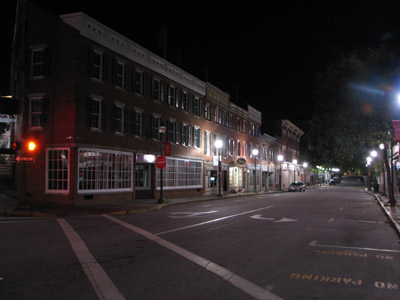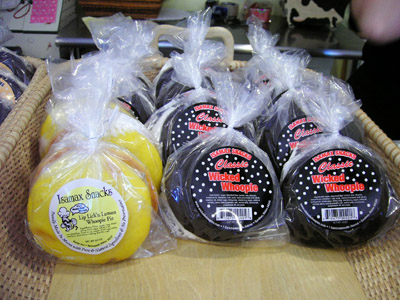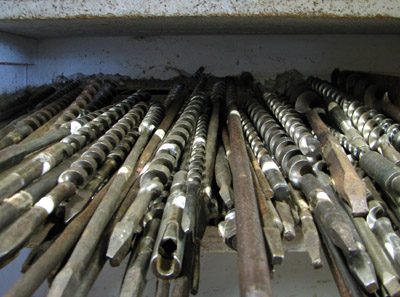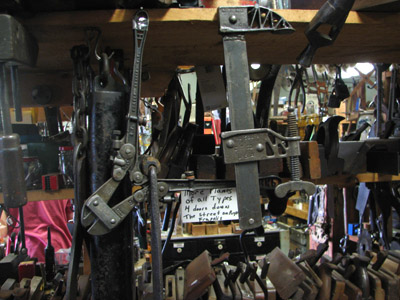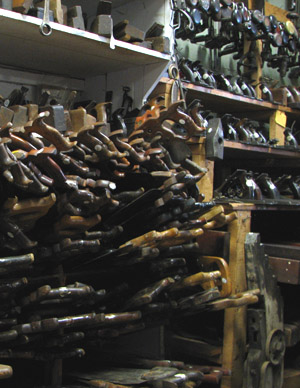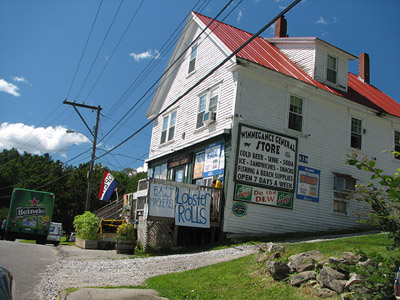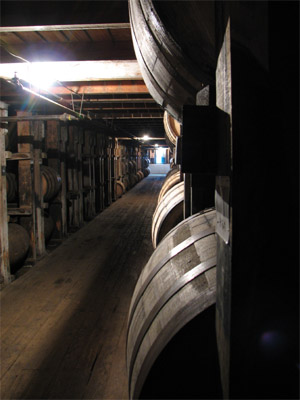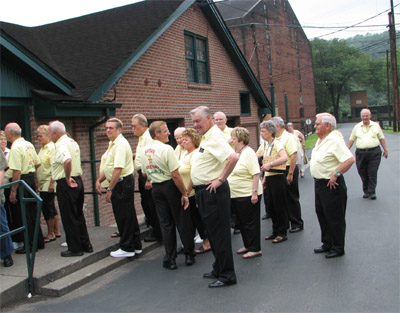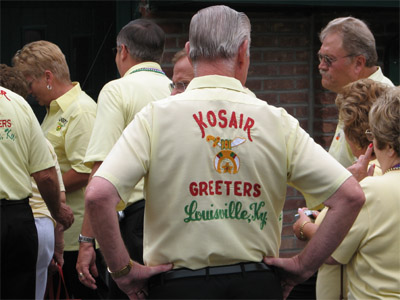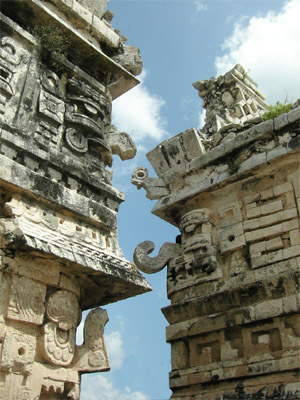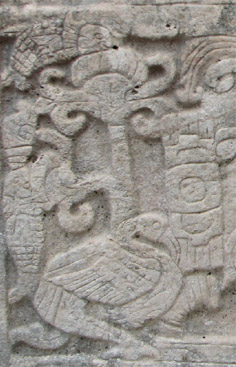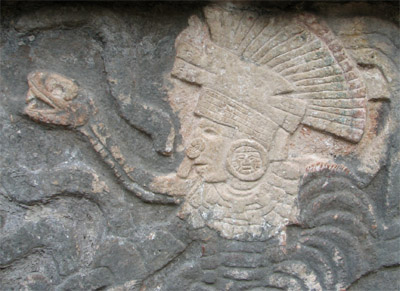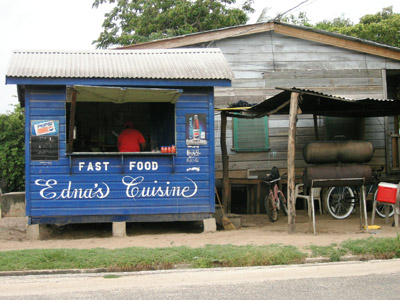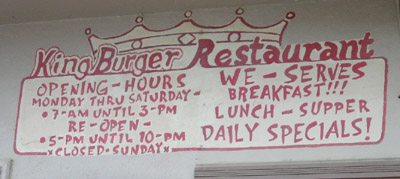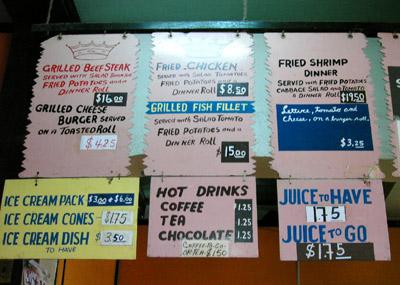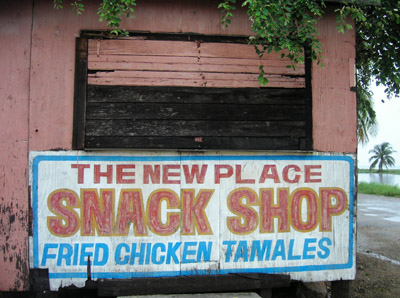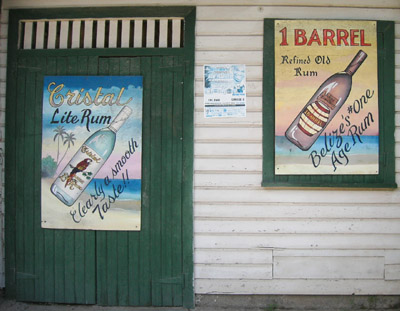
We spent a number of days in Granada under the pretext of taking Spanish classes; however, Joshua lasted only one day and I held out three. Oh well. We did a lot of studying on our own though. We seem to not be able to find very good classes these days. Both of us are at the stage where we need to practice our fluency and just getting information across and most courses seem to only focus on grammar and vocabulary, which is great, but vocabulary certainly is something we can study on our own and learning complex grammar is just not helping me when I can’t even get the simple stuff out of my mouth without leveling a few city blocks.
In addition to not taking Spanish classes, we did a lot of walking around just to spite the dramatic heat. The town is a lovely colonial town built next to an incredibly large lake, from which a steady strong breeze generally blows. Unfortunately, the center of town is not next to the lake (not sure why) and several blocks of concrete and pavement ensure that the heart of the city is well insulated from any sort of refreshing breeze that might make it from the lake.
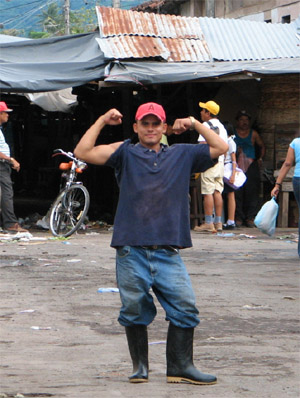
(These guys were hauling ginormous beef carcasses at the Mercado; Joshua was slyly trying to get a photo of the meat but this guy spotted us and decided to take control of the photography session.)
The first day and in fact nearly every day of our stay, we woke up to no electricity. This meant that the fan in the room stopped working and the room would heat up rapidly the moment the sun rose. In addition to the sweltering living quarters, the water ran on an electric pump so it too would stop working. So basically every morning we would come flying out of our room at around 7:15am panting, half dressed, and having to pee to no lights and no water. Someone always managed to get to that first flush in the communal toilet and so we were out on the street generally by 7:18am trying to hunt down a restaurant with the wherewithal to make coffee without electricity and running water in the bathroom. Kathy’s seemed to frequently fit the bill; they even put little candles in the bathrooms so you could see where you were throwing your paper towels, a huge bonus. Kathy’s has really good coffee and American-style fare in addition to the Nicaraguan breakfast (there’s only one: scrambled eggs, pinto gallo—which is rice and beans cooked together, and maybe some fried plantains). Kathy’s is also something of a hangout of the retired guy expat community, being itself owned and run by an expat man and his attractive young Nicaraguan wife.
We met a number of the expat crew during our stay in Granada, usually at Kathy’s. All of them were jovial men in their 60s and upward with young (like early twenties) Nica wives. They would all arrive and cluster around two or three extended tables ranting about the soccer game or the upcoming election or whatever and the wives would all group together and discuss various telenovela dramatics and the latest plot twists. The majority of them seemed to have come recently (within the last five years) from Costa Rica, where they retired initially, did a little speculating, possibly married a Costa Rican woman, but when the cost of living there skyrocketed and crime rates increased, they sold their properties and bought into the Nicaraguan market. A couple of the men we met owned properties that they were fixing up for sale to the foreign market. A strange scene really, but most of the people we met in Granada, tourists not excluded, were really bizarre people with their own trip going. One of the expats described his situation, “Why wouldn’t a guy like me move to Nicaragua? I built a big beautiful house where I have a cook and gardener and good security for pennies. I have a beautiful 22-year old wife. Here I live like a sultan.â€
Granada was the first place we visited in Nicaragua and it was so very different from the places we had visited in Central America, especially El Salvador. First of all, we rarely if ever see any western tourist faces in El Salvador (except other boaters in the estuary) and in Granada, there are many tourists and a large community of expats and foreigners working for NGOs and whatnot. The majority of restaurants in the city center are ‘tourist restaurants’ run by expats, not Nicaraguans, and the locals seem to be scrambling to get in on the tourist market. We got a tense vibe from the place—something similar to what we felt when we visited Antigua and Chichicastananga in Guatamala twelve years ago (granted, Guatemala was still more insane even then than Nicaragua is now). I wonder if Granada might be heading in the same direction as Antigua.
Anyway, enough of why-Granada-is-weird; there is some good food to be had there. We found Nicaraguan food, on the whole, to be less than mind blowing. In fact, after a mere three weeks of travel in the area, I doubt I will be able to face pinto beans again for a long, long time. (Those of you who are aware of my dislike of pinto beans might be amused to discover that I had actually gotten used to and even enjoyed them on occasion in Mexico—and in El Salvador if well seasoned and served with cream and fried plantains.) By the end of this trip, one look at a plate of pinto gallo in the morning was enough to make my stomach turn. Nicaragua has once again killed the pinto bean for me.
Here is a list of our favorite things to eat in Granada.
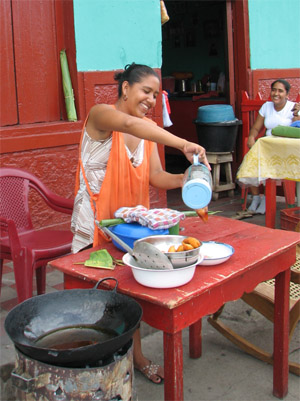
* Buñuelas! Around 5pm every day, the Buñuela Lady mixes a big metal bowl of grated yucca and cheese, gets a small fire going with a wok of oil and drops spoonfuls of the batter to deep fry. She sets up on the sidewalk presumably in front of her house and is there until all the buñuelas are cooked and sold. She charges one cordoba (6 cents) per piece and gives them to you in a small baggie with an amber colored syrup over them. They are incredibly delicious with a golden crispy outside, a tart cheesy inside and the malty sweet syrup. Definitely my favorite street snack in Nicaragua. She can be found in the evenings on Calle el Comercio (also called Atravezada north of cross street Xalteva). Walk south past the central Mercado, past the Texaco station, over the small bridge; she’s another couple of houses on the right (right before you get to a somewhat wide paved street).
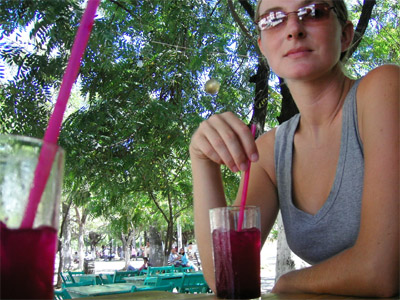
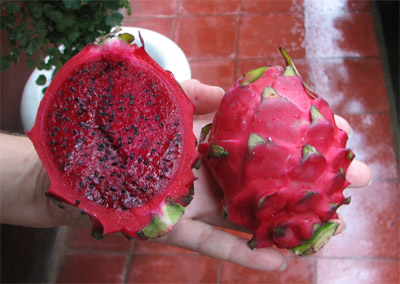
* Pithaya juice. A juice made from the pithaya fruit (looks like a southeast Asian dragon-fruit except intensely magenta inside) mixed with water, lime juice, and sugar. If you are lucky, you get a bunch of the seeds in the bottom which have a pleasing crunching texture. The flavor is great mostly because of the lime juice—the pithaya itself is not terribly intensely flavored—but the color of the stuff makes up for everything. You can get it almost everywhere (market, street juice vendors, Parque Central kiosks).
* Las Colinas. This is a restaurant that serves an excellent guapote (a fish from the lake). It is an enormous place with a well-watered sandy floor and about a thousand tables. The place had been recommended to us by a local girl who said if you want fish, this is the absolute best place in town to get it. We arrived a little before the standard dinner hour and felt a little awkward as we had the place to ourselves. We were also a little surprised that the prices were not as cheap as we were expecting (the small guapote ran around $6.50); however, the “small†guapote is actually rather large and you can order medium and large guapotes. (We probably would have ordered a medium to split had we know there would be so much food.) After we ordered and were drinking our beer, a number of people (all Nicaraguans) showed up and we didn’t feel so alone; almost all of them also ordered the guapote. As promised, the fish was great; the guapote is a fresh-water fish and has a different flavor than the fish we were used to eating. The typical way to prepare it seemed to be de-boned (even de-spined) with the head and tail still intact and then pan-fried with garlic and salt. The fish is crispy on the outside as well as the inside (lots of crispy fried surface area) with tender white flaky meat inside. Las Colinas served it with a tomato, onion, and pepper sauce over the top with French fries, rice, and salad. A ton of food, basically, which is why I might recommend splitting a medium fish if you intend to walk out of there under your own power afterwards. To get there: Follow the basic instructions above to get to the Buñuela Lady. When you get to the wide paved street (right past her house), turn left and walk around three blocks. You will go down a dip in the street and then up a small hill; the restaurant is on the corner, on the right hand side of the street and it is a large, unmistakable place.
* Pizza. For the first time ever traveling, I had a hankering for pizza. A hankering for pizza that spanned several days and we ended up trying three different pizza places in town.
Don Luca on Calle La Calzada: decent but not outstanding pizza; thin crust. My biggest complaint was that the mushrooms were out of a can. What the hell? Why would you bother with mushrooms if the only ones available were from a can? Obviously the few minutes pizza takes to cook were not enough to pierce the moist rubbery consistency or do anything for the flat beige color. The best part was the spicy oil they served along with the pizza. We used a lot of this.
Monna Liza on Calle La Calzada: quite good; again, the evil canned mushrooms but fewer and therefore, less offensive. The crust was great and again, the pizza was served with the spicy oil (not as spicy as Don Luca’s). We ordered negronis for dessert (a campari-gin-sweet vermouth cocktail), which were served over ice, not up (probably due to the heat), but were exciting nonetheless.
Telepizza on Calle El Arsenal: the cheapest of the three and extremely popular with the local Granadians (whereas Monna Liza and Don Luca only had a tourist or expat crowd). We were starving when we went here and the pizza, while less delicate than Monna Liza’s, was hearty and very good. The type of pizza and taste was comparable to any decent pizza place in the states, I would say.
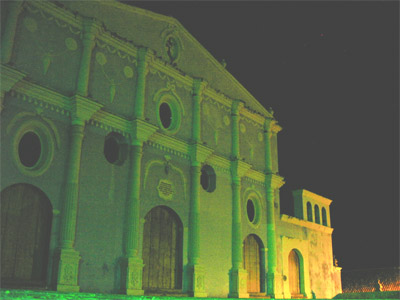
(The blue Iglesia de San Francisco at night.)
* Kathy’s on the corner of Calle El Arsenal and across from the eggshell-blue Iglesia de San Francisco. Extremely pleasant porch seating across from the lovely blue cathedral with numerous fans above that keep the flies at bay. (Did I mention there is an incredible fly problem in Nicaragua? Unreal. I don’t know exactly what it is but El Salvador just does not have them like Nicaragua does. Eating anywhere without a strong fan directly on you requires constant vigilance with a napkin to defend your plate. Beers are often seen on tables with a napkin wrapped over the opening when not being sipped from.) As I mentioned earlier, the coffee is very good here and breakfasts are hearty, American-style. Another similar breakfast place is Ed’s Nica Buffet on Calle Estrada; I think I liked his coffee better than Kathy’s but the setting isn’t as pleasant.
* Vigarón. I enjoyed this dish but Joshua was not so hot on it. It’s worth mentioning because there are ladies with large baskets selling this all over the market; also, there are four kiosks at the corners of the central square and they all serve only vigarón (as well as fresh juices and soda pops). It is cooked yucca chunks with large curls of chicharón (fried pig skin—I’m not a fan but Joshua loves the stuff) topped with a piquant cabbage salad and served on a banana leaf. If you order it from one of the kiosks, you will get a fork to eat it with.
